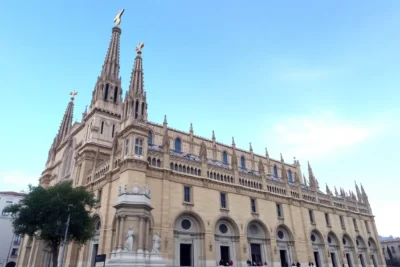
The Sagrada Familia, a masterpiece of modernist architecture, stands as a testament to the artistic vision of Antoni Gaudí. This stunning basilica, still under construction after more than a century, draws millions of visitors from around the globe, eager to witness its intricate designs and profound symbolism.
Renowned for its unique blend of Gothic and Art Nouveau styles, the Iconic Sagrada Familia in Barcelona, Spain showcases Gaudí's innovative approach to architecture. With its towering spires and detailed facades, it embodies a spiritual journey, transforming the skyline of Barcelona and captivating the hearts of all who come to see it.
Exploring the Architectural Genius of the Sagrada Familia in Barcelona
Exploring the architectural genius of the Sagrada Familia reveals a complex interplay of natural forms and spiritual symbolism. Gaudí's vision was not merely to create a church but to craft an experience that resonates with the divine. The design incorporates elements from nature, including tree-like columns and intricate facades that mimic the organic shapes found in the environment.
The basilica's layout is a masterclass in geometry and structure. Its unique design includes features such as:
- Verticality: The towering spires symbolize reaching towards the heavens.
- Light integration: Stained glass plays a crucial role in illuminating the interior with colored sunlight.
- Symbolic sculptures: Each facade tells a different biblical story, enhancing the spiritual experience for visitors.
Moreover, the Sagrada Familia stands out for its innovative construction techniques. The use of hyperboloid structures not only supports the weight of the building but also adds to its aesthetic appeal. This method allows for greater flexibility in design, enabling Gaudí to create a structure that is both sturdy and visually stunning.
This architectural marvel is also a reflection of Gaudí's deep faith, as evident in the meticulous planning behind every detail. The ongoing construction, driven by modern technology while respecting Gaudí's original vision, underscores the timeless relevance of his ideas. As the Sagrada Familia approaches completion, it continues to inspire awe and admiration, making it a must-visit landmark in Barcelona.
The History and Significance of the Sagrada Familia's Design
The history of the Sagrada Familia's design is rooted in a blend of innovation and tradition, reflecting Antoni Gaudí's deep connection to both his faith and the natural world. Initially commissioned in 1882, the project has evolved significantly over the decades. Gaudí took over the design in 1883, imbuing the basilica with his unique vision, which integrates Gothic elements with organic forms inspired by nature, making it a quintessential example of Modernisme.
Gaudí's approach to the Sagrada Familia's design can be summarized through several key principles:
- Symbolism: Each element, from the facades to the spires, carries a spiritual significance, depicting various aspects of Christianity.
- Nature-inspired forms: The architecture mimics natural structures, such as trees and caves, creating a harmonious and immersive environment.
- Light and color: The thoughtful placement of stained glass enhances both the aesthetic and spiritual experience, filling the interior with a spectrum of colors.
The significance of the Sagrada Familia's design lies not only in its architectural beauty but also in its intended message. Gaudí envisioned the basilica as a narrative of faith, where each facet serves as a chapter in an ongoing story of spirituality. This concept is evident in the intricate details of the Nativity and Passion facades, which convey the life of Jesus Christ in a visually compelling manner.
As the construction continues into the 21st century, the Sagrada Familia's design remains a beacon of creativity and devotion. Modern advancements in technology and construction methods have enabled artisans to remain faithful to Gaudí's original vision while also ensuring the basilica can withstand the test of time. Ultimately, the Sagrada Familia is not just a building; it is an evolving symbol of faith and artistry, destined to inspire future generations.
Visiting the Sagrada Familia: Tips for Tourists in Barcelona
When planning your visit to the Sagrada Familia, it's essential to book your tickets in advance online. This not only saves you time but also guarantees your entry on busy days. Consider choosing a time slot during off-peak hours, typically early morning or late afternoon, to enjoy a less crowded experience.
To make the most of your visit, consider the following tips:
- Audio guides: Rent an audio guide to gain deeper insights into the basilica's history and architectural details.
- Dress code: As a place of worship, appropriate attire is recommended; ensure your shoulders and knees are covered.
- Photography: Be respectful of the sanctity of the space when taking photos, especially during mass.
For those interested in exploring beyond the main attraction, consider a guided tour that includes nearby highlights such as Park Güell or Casa Batlló. This can provide a comprehensive view of Gaudí's architectural legacy throughout Barcelona.
Lastly, be prepared for the weather, as the Sagrada Familia is best enjoyed with a clear view of its intricate details. Check the forecast and dress accordingly, ensuring a comfortable experience as you marvel at this iconic masterpiece.
Understanding the Symbolism Behind Sagrada Familia's Unique Facade
The Sagrada Familia's facade is a canvas of **symbolism**, intricately designed to convey profound religious themes. Each element serves a purpose, transforming the structure into a visual narrative that invites contemplation. For instance, the Nativity facade celebrates the birth of Christ, featuring lush motifs that represent life and creation, while the Passion facade starkly contrasts, reflecting themes of suffering and sacrifice.
In addition to the overarching themes, the **sculptural details** on the facades highlight specific biblical stories. Notable elements include:
- Animal motifs: Symbolizing innocence and purity, these creatures reflect the natural world that Gaudí revered.
- Religious figures: Iconic saints and biblical characters are depicted, each contributing to the overarching message of the basilica.
- Floral patterns: These motifs emphasize growth and divinity, connecting the structure to nature and spirituality.
The interplay of light on the Sagrada Familia's facades further deepens its **symbolic resonance**. As sunlight filters through stained glass and reflects off intricately carved stone, it creates a dynamic experience that shifts throughout the day. This design approach not only enhances the aesthetic beauty but also symbolizes divine presence, reminding visitors of the spiritual journey inherent in their visit.
Ultimately, understanding the symbolism behind the Sagrada Familia's unique facade enriches the experience of this architectural marvel. As each visitor gazes upon its intricate details, they become part of a living story that intertwines faith, nature, and art, making the **Iconic Sagrada Familia in Barcelona, Spain** a truly transformative place of worship and reflection.
The Role of Antoni Gaudí in Shaping Barcelona's Iconic Landmark
Antoni Gaudí's role in shaping the Iconic Sagrada Familia in Barcelona, Spain, is essential to understanding its uniqueness and significance. As the chief architect from 1883 until his tragic death in 1926, Gaudí infused the basilica with his vision, blending religious symbolism with innovative architectural techniques. His approach was not just about aesthetics; he sought to create a spiritual experience that would resonate with visitors, reflecting his deep faith and connection to nature.
Gaudí's ingenuity is evident in the way he employed natural forms and organic materials in the Sagrada Familia's design. By studying the structures of trees, he developed branch-like columns that support the building while mimicking the beauty of the natural world. This method not only enhances the visual appeal but also reinforces the basilica's structural integrity. Gaudí's understanding of geometry allowed him to create a harmonious relationship between nature and architecture, making the Sagrada Familia a pioneering example of modernist design.
Furthermore, Gaudí's meticulous attention to detail is reflected in every aspect of the basilica, from its facades to its interiors. He incorporated symbolic elements that narrate biblical stories, inviting visitors to engage with the spiritual journey represented in the architecture. Each facade serves a distinct purpose, showcasing the life of Christ and the essence of Christianity, which is central to the basilica's overall message.
As the Sagrada Familia continues to evolve towards its anticipated completion, Gaudí's legacy remains a driving force. His innovative ideas have inspired generations of architects and artists, solidifying the basilica’s status as a cultural icon. The ongoing construction combines modern technology with Gaudí's original vision, ensuring that this landmark will continue to captivate and inspire future visitors, reinforcing its place as a masterpiece in the heart of Barcelona.
Sagrada Familia: A Masterpiece of Modernist Architecture in Spain
The Sagrada Familia is not merely a church; it is a profound symbol of cultural identity for Barcelona and Spain. Its architecture is a harmonious blend of natural and spiritual elements, embodying the essence of Modernisme that has become synonymous with Gaudí. As visitors approach the basilica, they are greeted by its majestic towers, which reach towards the sky, inviting them to reflect on their own spiritual journeys.
In addition to its stunning architectural features, the Sagrada Familia serves a greater purpose: it is a narrative of faith. Each of its facades conveys a different story, from the joyous Nativity facade celebrating Christ's birth to the somber Passion facade that depicts his suffering. This intentional design invites visitors to engage deeply with the themes of life, death, and resurrection, creating a spiritual pilgrimage for many.
The ongoing construction of the Sagrada Familia reflects the commitment to heritage while embracing modern techniques. Today, advanced technologies such as 3D printing and laser scanning are employed to ensure that Gaudí's original vision is meticulously followed. This fusion of tradition and innovation not only honors the past but also secures the basilica's future as an architectural wonder.
To fully appreciate the Sagrada Familia, tourists should consider exploring its surroundings. Nearby attractions such as the Park Güell and Casa Batlló offer additional insights into Gaudí's work and the rich tapestry of Barcelona's architectural landscape. This interconnectedness enriches the visitor experience, allowing them to understand the profound impact Gaudí has had on the city's identity.
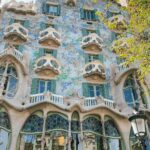 Casa Batlló Light Show: A Spectacular Display of Gaudí's Architecture
Casa Batlló Light Show: A Spectacular Display of Gaudí's Architecture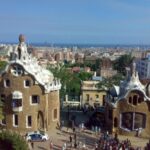 Park Güell: A Public Park Designed by Antoni Gaudí on Carmel Hill in Barcelona, Spain
Park Güell: A Public Park Designed by Antoni Gaudí on Carmel Hill in Barcelona, SpainIf you want to know other articles similar to Iconic Sagrada Familia in Barcelona, Spain you can visit the category Sagrada Familia.
Leave a Reply

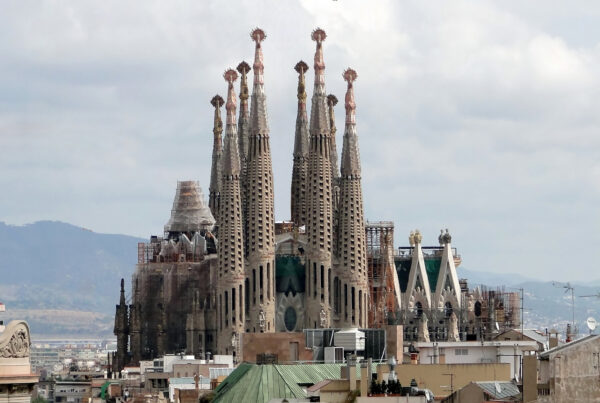
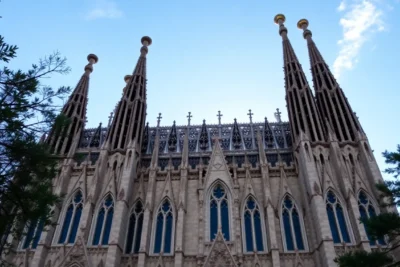
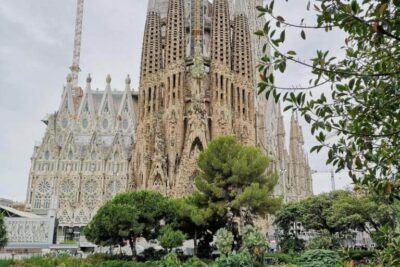
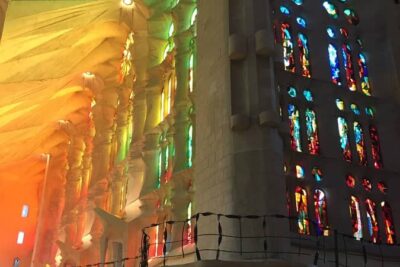
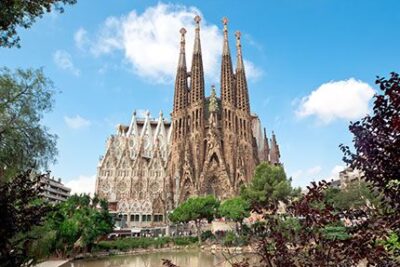
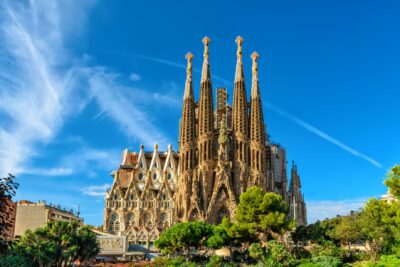

Read more!